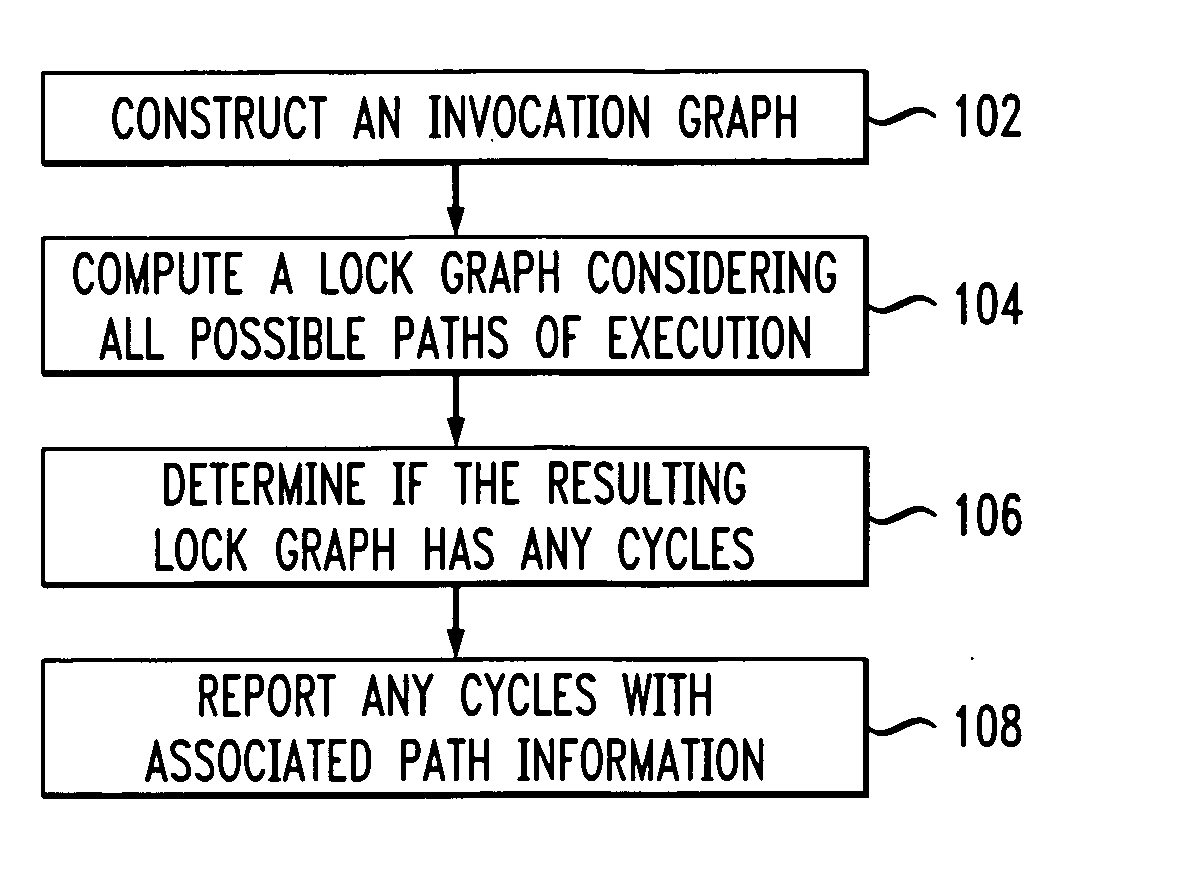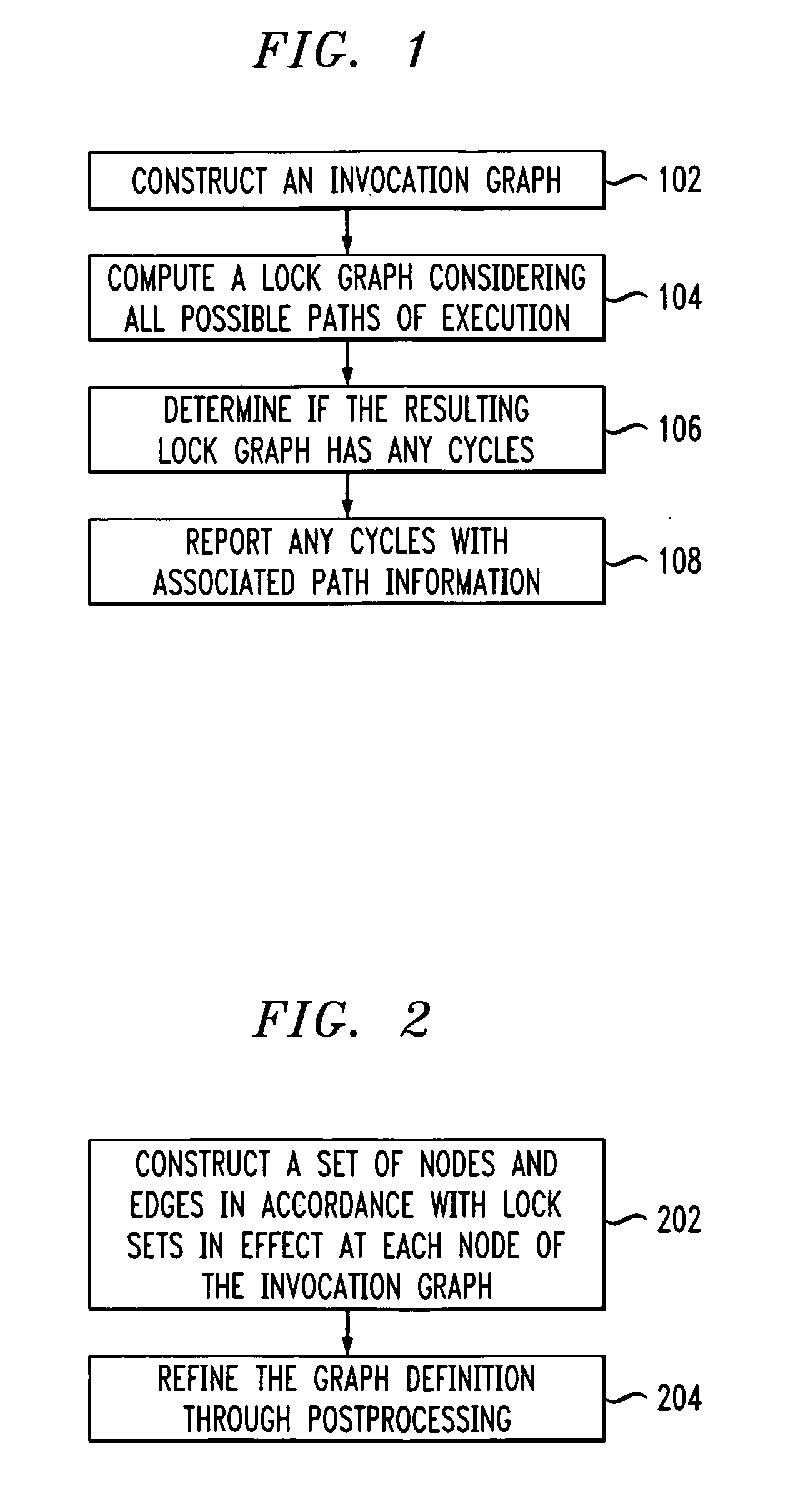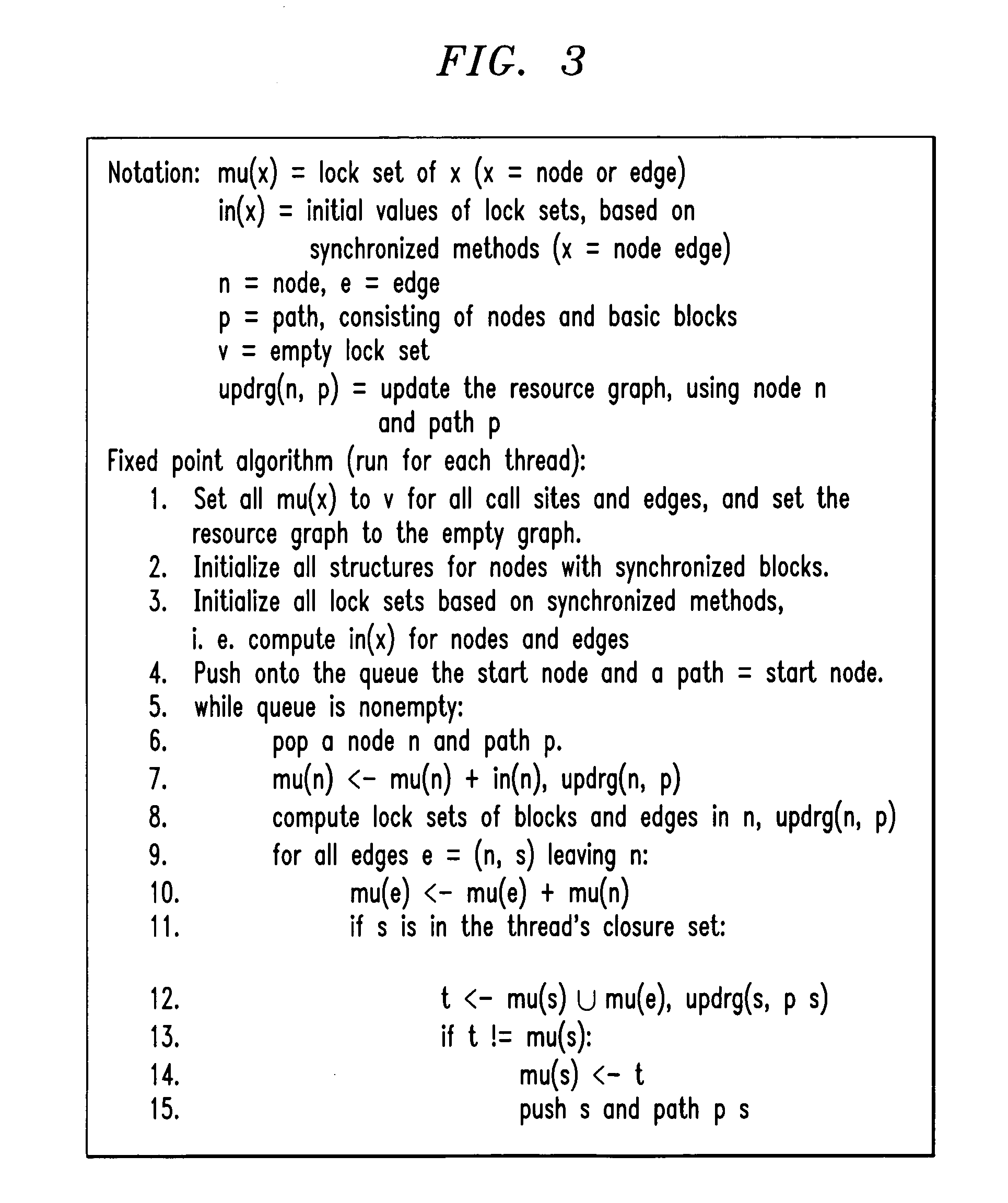Methods and apparatus for detecting deadlock in multithreading programs
a multi-threading program and deadlock detection technology, applied in the field of multi-threading programs, can solve problems such as difficult detection of deadlock, and achieve the effect of large problems
- Summary
- Abstract
- Description
- Claims
- Application Information
AI Technical Summary
Benefits of technology
Problems solved by technology
Method used
Image
Examples
Embodiment Construction
[0027] As will be illustrated in detail below, the present invention introduces techniques for detecting deadlock in multithreading programs. The embodiments of the present invention may be implemented for any multithreading program implementing monitors, however, for illustrative purposes they are described herein as applied to a Java™ program.
[0028] The embodiments of the present invention may be utilized for both source code and byte code. In the former case, the source code is compiled and the approach is applied to Java™ archive (jar) files containing the byte code. In the latter case, the methodology may be applied even if the source code is unavailable, which may frequently occur. The embodiments are automatic, and no annotation of the code is required. The jar files are input to the system along with some configuration data, and the output is a report that includes a summary of potential deadlocks.
[0029] The Java™ language makes use of monitors, which protect a body of cod...
PUM
 Login to View More
Login to View More Abstract
Description
Claims
Application Information
 Login to View More
Login to View More - R&D
- Intellectual Property
- Life Sciences
- Materials
- Tech Scout
- Unparalleled Data Quality
- Higher Quality Content
- 60% Fewer Hallucinations
Browse by: Latest US Patents, China's latest patents, Technical Efficacy Thesaurus, Application Domain, Technology Topic, Popular Technical Reports.
© 2025 PatSnap. All rights reserved.Legal|Privacy policy|Modern Slavery Act Transparency Statement|Sitemap|About US| Contact US: help@patsnap.com



